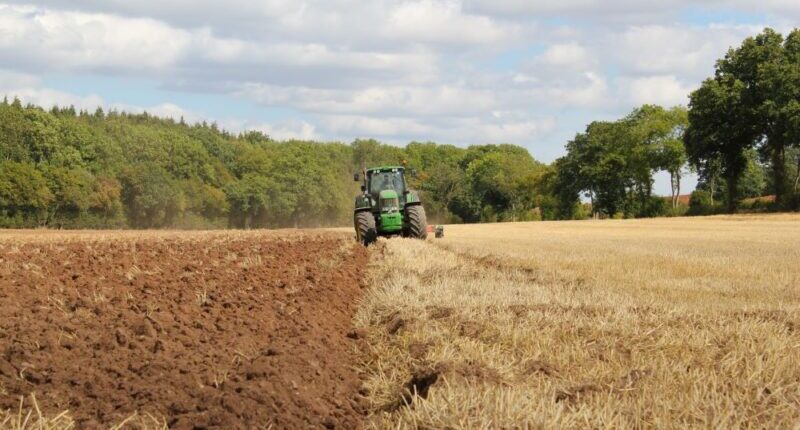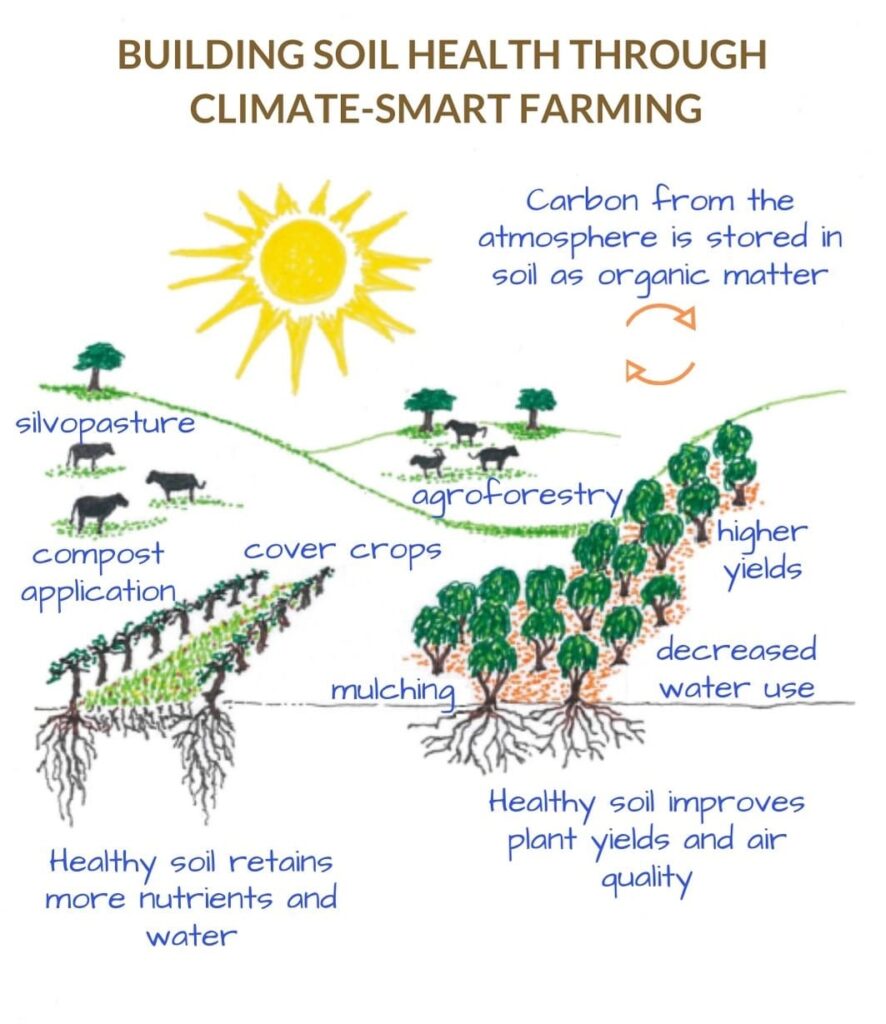Building Soil Health Through Climate-Smart Farming

by Craig Kolodge Ph.D. (aka Dr. K)
Building Soil Health Through Climate-Smart Farming allows you to continually renew your soil while you are growing and harvesting crops. It is easy to do.
Did you know that San Pasqual Valley Soils’ annual impact on reducing GHG’s is the equivalent of removing approximately 2000 automobiles from our local roads and highways and capturing and storing in our soils over 2 million gallons of rainfall each year.
Greenhouse gases (GHG’s) are gases in the atmosphere that act to trap heat near the earth’s surface.
So what is Carbon Sequestration and how does it help in regulating the amount of heat stored in our atmosphere?
“Biological carbon sequestration is the long-term storage of carbon in soils and vegetation resulting from applications of compost and mulch to land.
Soils hold more carbon than the atmosphere or plant and animal life combined. Climate experts say no strategy to reduce climate change is complete without relying upon the world’s soils. Over the centuries, human activities have degraded soil, resulting in the loss of a significant portion of their carbon content to the air.
Land management practices contribute to about one-third of the surplus CO2 in the atmosphere that is driving climate change. On the other hand, carbon can be stored long-term in soil through carbon sequestration by applying compost to the land. A series of experiments done in Northern California shows that one application of compost started a chain reaction of carbon sequestration that will last decades. Therefore, compost and mulch applied to many types of land may be the single greatest weapon in the fight to reduce the effects of climate change.”
Excerpted from CalRecycle Carbon Sequestration webpage
Compost and mulch also act indirectly by creating healthy soils which support plant development, reduce erosion and remove toxic chemicals associated with storm water run-off, increase the water holding capacity of soils (1 cubic foot of our compost will hold 4 gals of water), improve water infiltration and capture and store precious rainfall in the soil before it escapes into our ocean. See diagram below showing how this process works in practice.
That speaks volumes as to the value and importance of recycling our natural resources and utilizing them to protect and renew our environment now and into the future. We appreciate and value all our partners and customers who have joined us in this endeavor.

